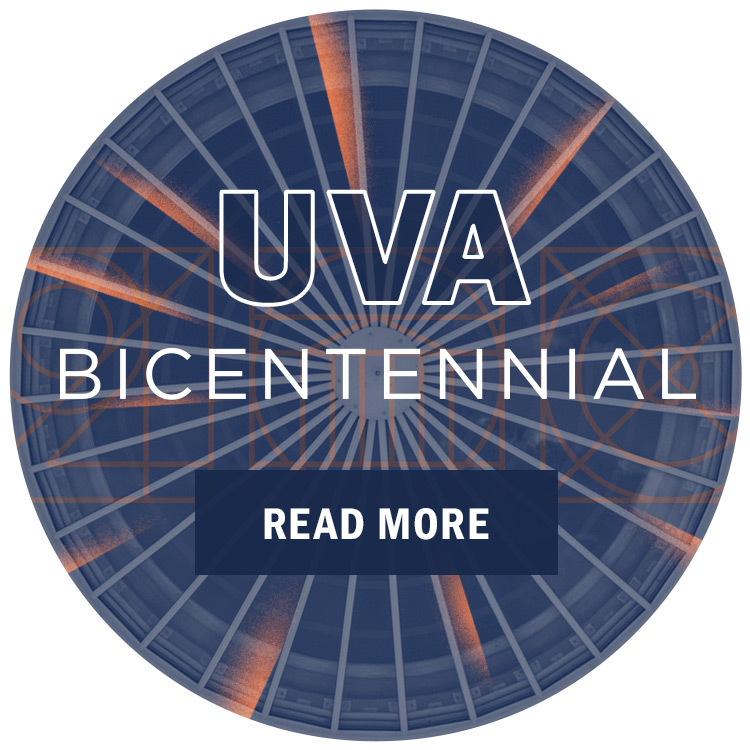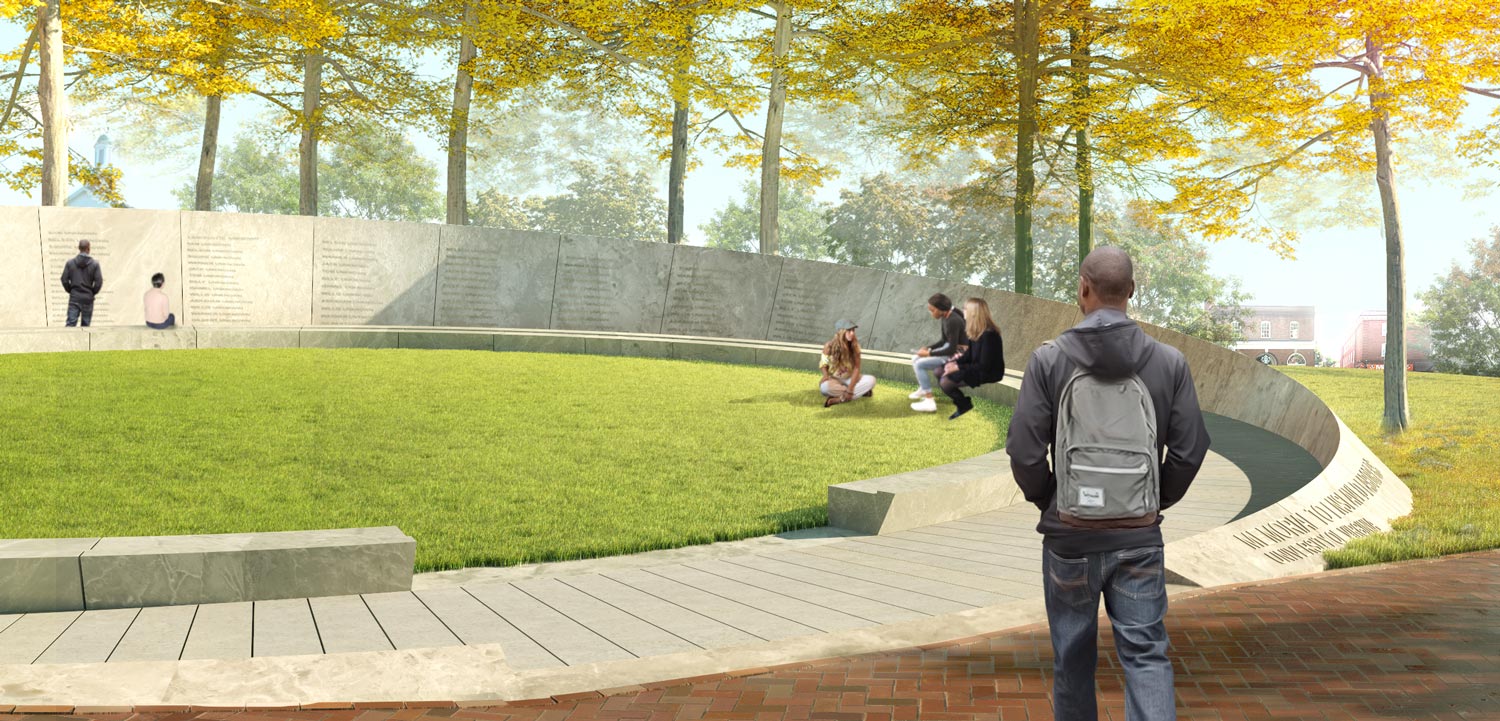Guests coming to the Lawn on Friday for the University of Virginia’s Bicentennial Launch Celebration can meander over to the location of the University’s planned Memorial to Enslaved Laborers, east of Brooks Hall and across from the Corner, to view displays of the design.

Members of the President’s Commission on Slavery and the University and other UVA staff will be on hand to answer questions about the memorial and slave history from 4 to 6 p.m. at the grassy area, sometimes called the “Triangle of Grass.”
UVA’s Board of Visitors approved the design for the Memorial to Enslaved Laborers in June. It will commemorate the contributions of slaves who worked to build and sustain the University in its early years.
On Friday, the actual location and size of the memorial will be staked out and a model of the memorial and other diagrams will be on display, as well as a small exhibit showing old domestic items such as broken dishes and buttons, plus bricks likely hand-molded by slaves.
“This small sample consists of archaeological artifacts found in the gardens where we think slaves might’ve lived that relate to early life in the Academical Village,” Mary Hughes, University landscape architect, said.
“We wanted to take the opportunity to raise awareness about the Memorial to Enslaved Laborers. We thought we could catch the public’s attention, so they can ask us questions and learn more about the memorial,” she said.
Along with Hughes, the co-chairs of the President’s Commission on Slavery and the University, Dr. Marcus Martin and history professor Kirt von Daacke; memorial design team member Gregg Bleam, a local landscape architect; and others will be there ready to talk with visitors.
Developed by a design team with input from University experts and important constituents, the memorial, known as the “Freedom Ring,” will rise from the open green space not far from the bustling area of the University’s original Academical Village, a UNESCO World Heritage Site that includes the newly renovated Rotunda. It will feature a stone wall, open at one section, encircling a stone bench that will provide opportunity for quiet reflection. Names of some of the enslaved laborers who were a vital part of University life will be inscribed on the wall.

The memorial design emerged after months of research and public outreach to the University community, alumni and Charlottesville-area residents by the President’s Commission on Slavery and the University. UVA President Teresa A. Sullivan established the commission in 2013, and its charge included considering an appropriate memorial, among other activities addressing the University’s historical relationship with slavery and enslaved people.
“Our decision to create a memorial to enslaved workers is an expression of our shared commitment to tell the full story of the University’s past, as we look toward its future,” Sullivan said.
Media Contact
Article Information
October 5, 2017
/content/exhibit-memorial-enslaved-laborers-display-friday

